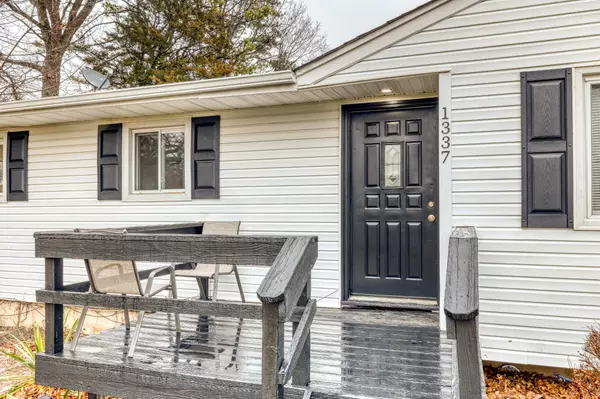Cost of Living on Long Island: What You Need to Know in 2025
Cost of Living on Long Island: What You Need to Know in 2025
Long Island offers beaches, waterfront living, diverse communities, and convenient access to New York City — but understanding the cost of living is essential for anyone planning to move, buy, sell, or invest in Nassau or Suffolk County. This guide breaks down the major living expenses on Long Island in 2025 so you can make clear and informed decisions.
Below, we’ll look at housing, property taxes, utilities, transportation, and everyday expenses, along with practical tips for planning your move or next real estate decision.
How Long Island’s Cost of Living Compares
Long Island’s overall cost of living is higher than the national average and higher than many other regions in New York State outside the NYC metro area. The higher costs primarily come from housing, transportation, property taxes, and utilities. Many people still choose Long Island for its coastal lifestyle and proximity to New York City — but having a realistic budget is key.
The goal isn’t to discourage you — it’s to give you the real numbers so you can choose the right town, home type, and long-term financial plan that fits your goals.
Housing Costs: The Biggest Expense on Long Island
Housing is the largest monthly expense for most Long Island households. Prices and rents vary widely depending on the town, proximity to amenities, age of the home, and access to rail or major roadways. Western Suffolk and Nassau tend to have higher price points than more rural eastern areas — especially near village centers or waterfront locations.
Buying a Home in 2025
When evaluating the cost of buying, it’s important to look beyond the list price and consider your full monthly payment. Mortgage interest rates, property taxes, homeowners insurance, and maintenance all contribute to your actual monthly budget.
- Mortgage: Principal & interest based on loan size and rate.
- Property Taxes: A major component of monthly payments on Long Island.
- Homeowners Insurance: Influenced by property age, condition, and location.
- Mortgage Insurance: May apply depending on down payment.
Two homes at the same price can have very different monthly costs depending on taxes, insurance, and utilities — which is why reviewing the full payment breakdown is so important.
Renting in 2025
Rents on Long Island have increased in recent years, especially in areas close to transportation hubs, village centers, and newer developments. When comparing renting vs. buying, it’s helpful to evaluate long-term plans and overall monthly costs.
- Monthly rent compared to ownership costs
- Flexibility vs. long-term stability
- Length of time you plan to stay on Long Island
In many cases, rising rents motivate residents to explore purchasing — especially if they expect to remain in the area for several years.
Property Taxes and Homeownership Costs
Property taxes are an important part of the Long Island cost-of-living equation. They support local services and public operations but also make up a significant portion of the monthly housing cost for homeowners.
- Review current taxes on any property you’re considering.
- Have your lender estimate your full monthly payment.
- Be mindful of possible reassessments after purchase.
Beyond taxes, ongoing maintenance, utilities, and seasonal upkeep should be included in your long-term budget.
Utilities and Everyday Living Expenses
Utility costs vary depending on the home’s size, insulation, age, and systems. Older homes may require more energy, while newer or updated homes often benefit from better efficiency.
- Electricity & Heating: Costs depend on usage and heating type (oil, gas, electric).
- Water & Sewer: Costs vary by town and usage.
- Internet & Cable: Monthly packages differ by provider and location.
Everyday services — groceries, dining, home maintenance, and recreation — tend to align with costs seen in major metro regions.
Transportation and Commuting Costs
Long Island is primarily car-dependent, though the Long Island Rail Road (LIRR) provides a key transportation option for many residents. Commuting costs depend on your location, travel frequency, fuel prices, and vehicle type.
- Car Costs: Fuel, insurance, maintenance, registration, and repairs.
- LIRR: Monthly commuter passes vary by station and destination.
- Parking: Some stations require paid parking or permits.
When deciding between different towns, some buyers balance commute time and commute cost as part of their overall decision-making process.
Healthcare, Childcare, and Other Services
Healthcare and childcare costs vary depending on provider, services, and coverage. These expenses are similar to those found in many major metropolitan regions and can range widely depending on individual needs and household situations.
- Review your current healthcare plan and estimated out-of-pocket costs.
- Request written estimates for regular care or services.
- Include these expenses in your monthly or annual planning.
Is the Long Island Cost of Living Worth It?
Long Island appeals to many because of its coastal environment, established communities, access to parks and beaches, and proximity to both New York City and regional employment centers. Whether the cost of living feels “worth it” depends on individual priorities, budget, and long-term plans.
The key is to compare your budget to real numbers — housing, transportation, utilities, and lifestyle — and choose the right location that aligns with your goals.
Tips for Managing Costs on Long Island
- Create a realistic budget: Factor in housing, taxes, utilities, and transportation before choosing a town.
- Get pre-approved early: Understand your full monthly payment with taxes and insurance.
- Compare home types: Condos, co-ops, and certain single-family homes may offer different cost profiles.
- Assess commute needs: Balance commute time and cost when choosing a location.
- Plan for maintenance: Budget for repairs, seasonal upkeep, and efficiency upgrades.
Understanding these details upfront helps you make confident, informed decisions about buying, selling, renting, or investing on Long Island.
Thinking About a Move on Long Island?
Whether you're relocating, considering an upgrade or downsizing, or looking at investment opportunities, understanding the true cost of living is the first step. The second step is having a local expert guide you through neighborhoods, pricing trends, and the nuances of the Long Island market.
When you're ready to explore your next move, I'm here to help you make clear, confident decisions grounded in real data and local expertise. Let’s get you moved.
Categories
- All Blogs (55)
- Baby Boomers (5)
- Beaches (7)
- Demographics (1)
- Distressed Properties (1)
- Down Payments (4)
- Featured (5)
- First Time Home Buyers (16)
- For Buyers (33)
- For Sellers (27)
- Foreclosures (1)
- Generation X (4)
- Golf (1)
- Holidays (3)
- Housing Market Updates (9)
- Infographic (4)
- Interest Rates (5)
- Lifestyle (15)
- Local Attractions (14)
- Long Island Living (1)
- Move-Up Buyers (18)
- New Construction (2)
- Pricing (13)
- Rent vs. Buy (6)
- Selling Myths (8)
- Senior Market (3)
- Things to Do (8)
Recent Posts











R.E. Associate Broker | License ID: 10301221652
+1(631) 257-1522 | kenville@listingsoflongisland.com


